Sanremo. In the far, far northwest along the Italian Riviera, in the region of Liguria, roughly a 20 km stone’s throw from the border with France. Only about 42 km from Monaco. There are palm trees, blue skies, a beachside promenade and bike path, a large casino, a Saturday market that draws foreigners, and traffic that would make anyone swear off driving.
There’s also Sandra, my landlady when I lived here from 2009 – 2010… and our friendship. When I first met her, I had been here in Italy only a couple of months and could speak very little Italian. But I’m sure she was thrilled to be renting to a “mature woman” instead of rowdy students. She invited me to visit them at their home… and I’ve returned every year since then. I travel there with my apron, and we chat while we scrub mussels and clams for spaghetti, or she makes Sardenara—typical Ligurian focaccia topped with tomato sauce, anchovies, taggiasche olives and garlic cloves.
A few years ago, Sandra told me about “La Pigna”–PEEN-yuh–and dropped me off there to shoot photos while she went to an appointment. Wow. I wandered and gladly crisscrossed the rabbit warren maze of narrow passageways, tunnels, arches and tiny courtyards. I was amused and pleased to see elders as they scaled the upward sloping, irregular, stepped paths. They must know every path’s intersection. The place was fascinating.
The inhabited core is completely clinging to the hill in concentric rings with covered passages, small courtyards, arches, fountains and stairways, in a succession of bold architecture. (Read more)
I generally seek out the the historic center—“centro storico”—of any town or city I’m visiting. Rarely am I seeking out the bright lights and polish. A place like “La Pigna” continues to fascinate me with its history, its wandering passages, its rough texture and intrigue.

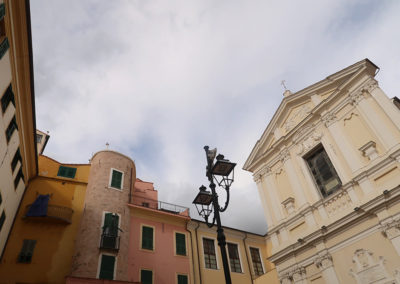
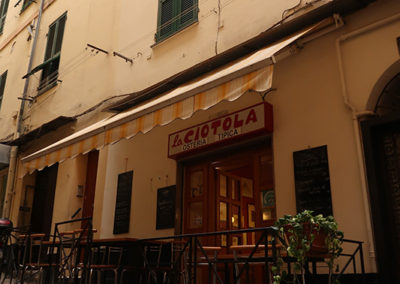
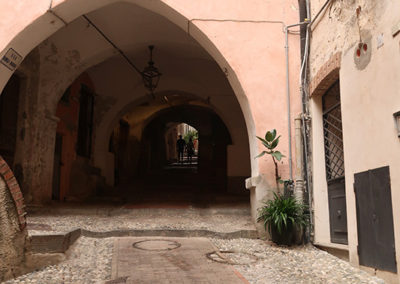
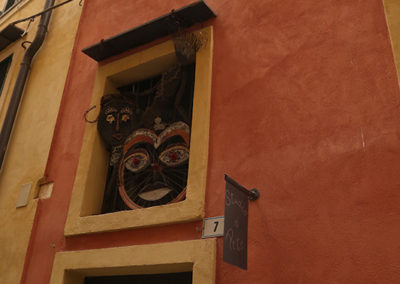
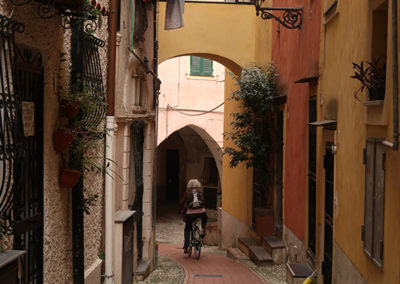
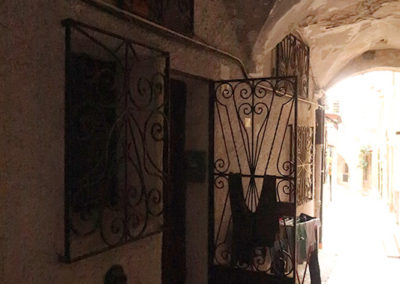
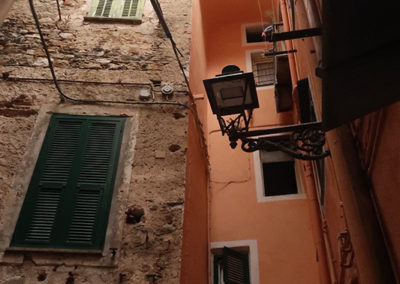
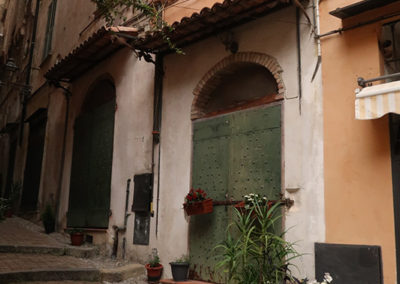
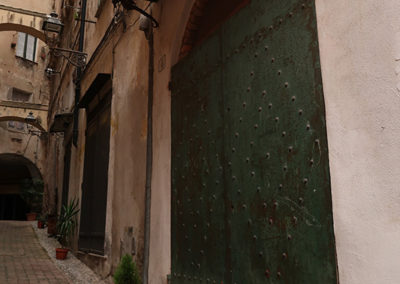
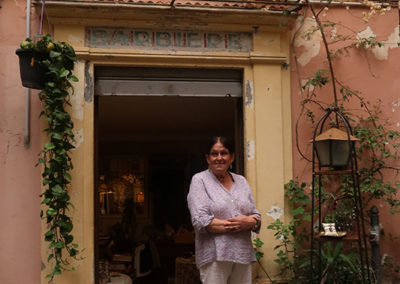
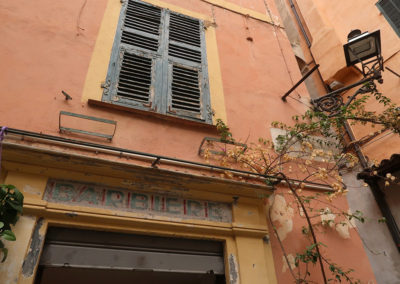
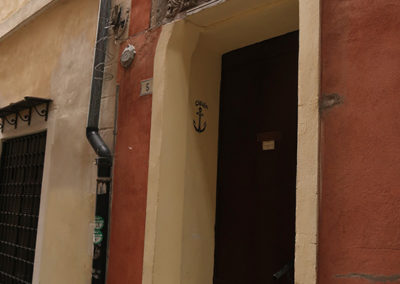
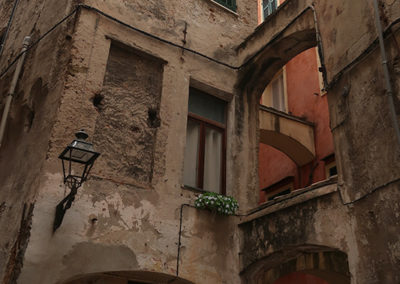
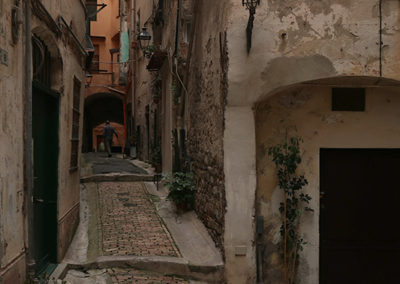
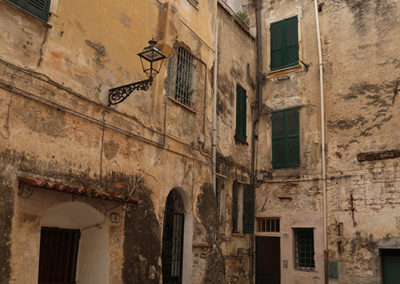
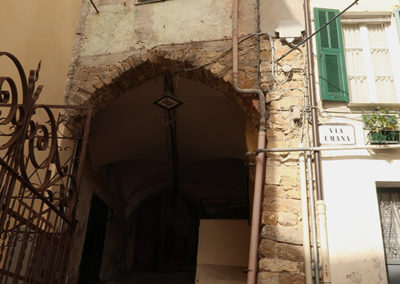
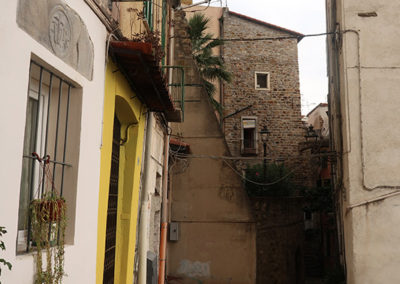
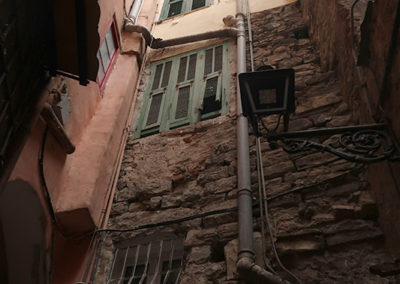
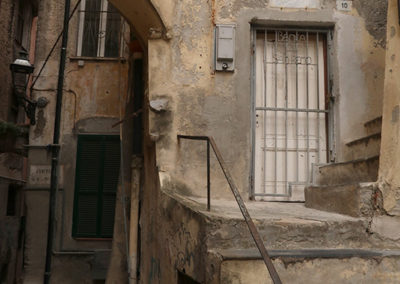
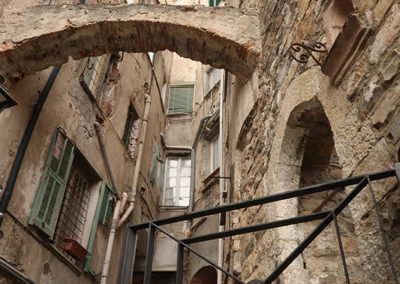
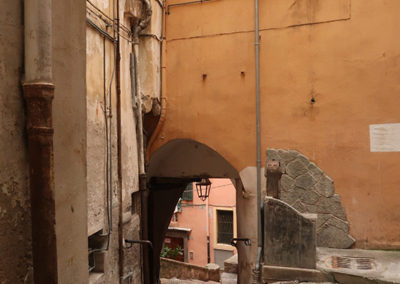
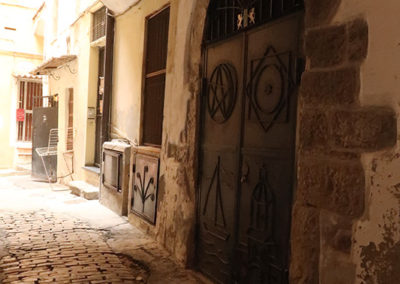
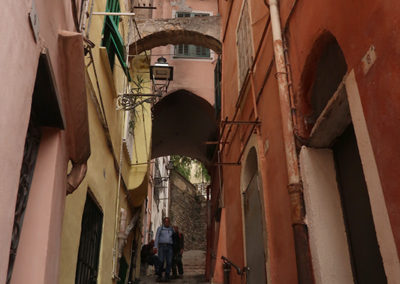
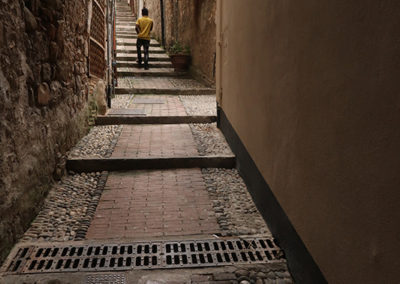
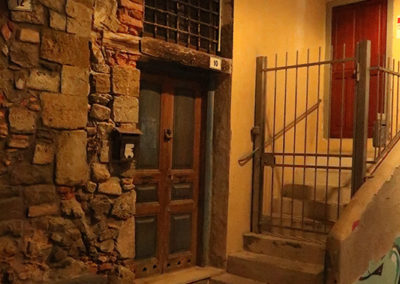
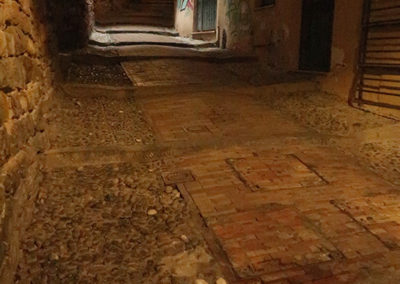
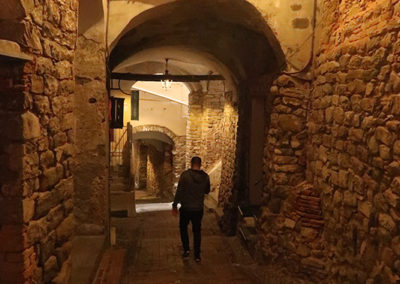
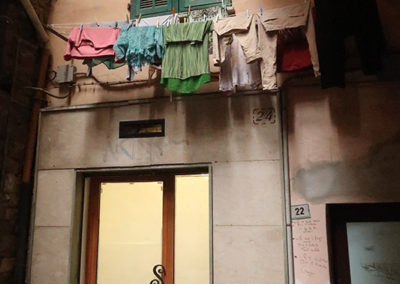
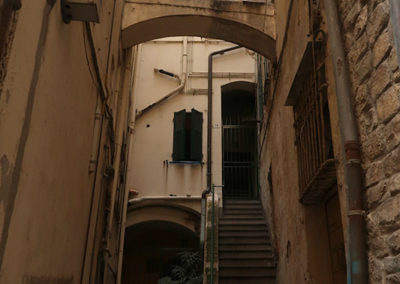
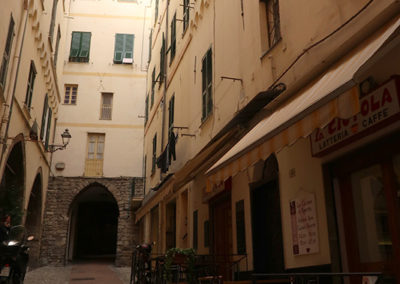
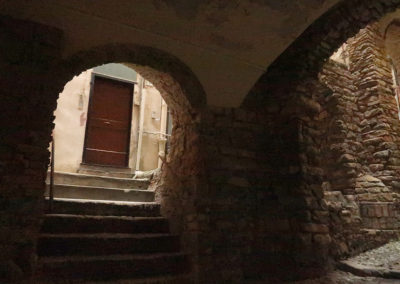
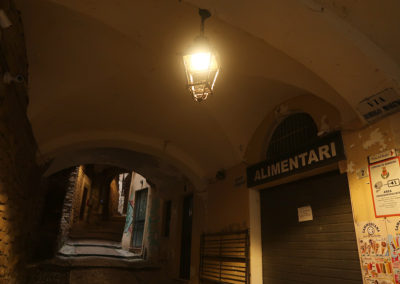
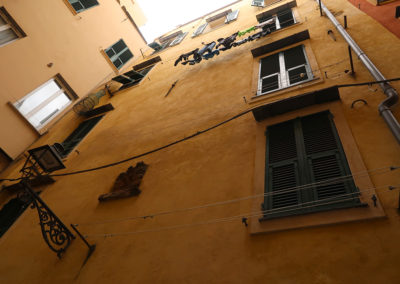
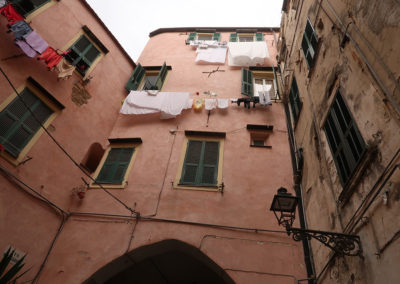
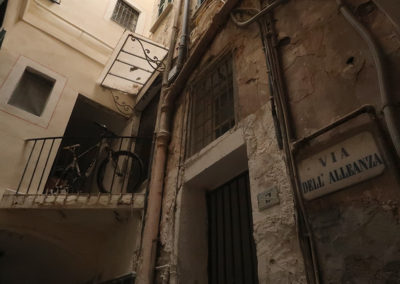
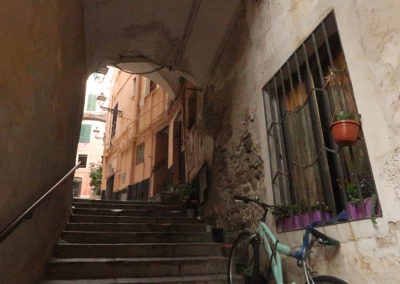
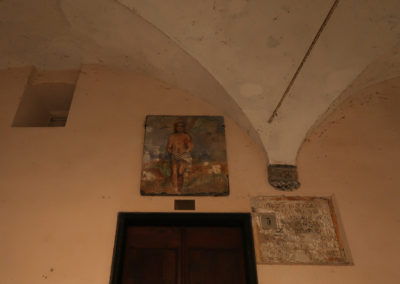
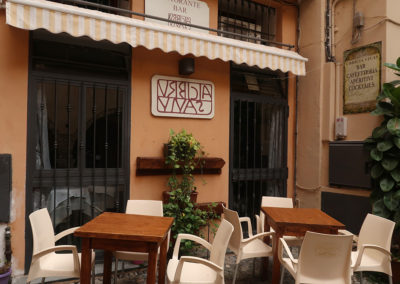
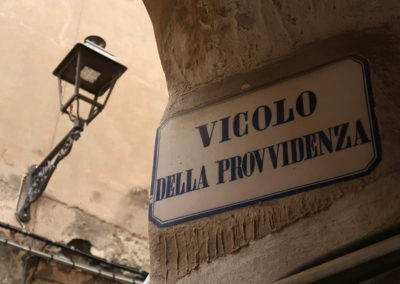
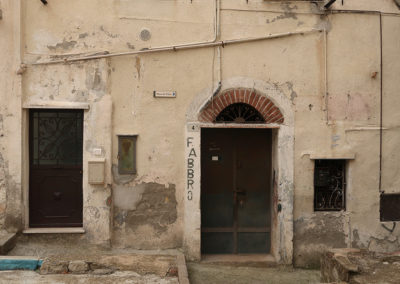
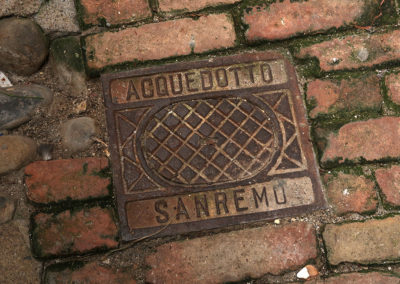
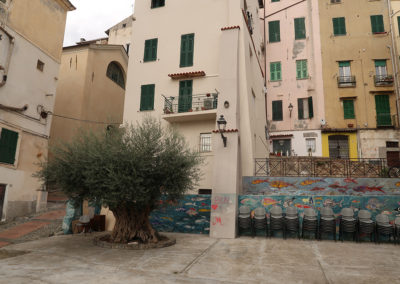
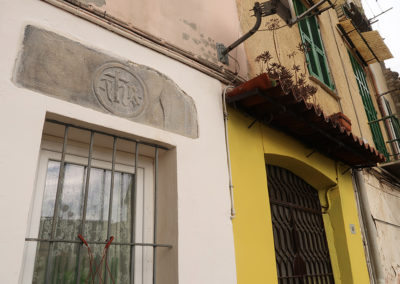
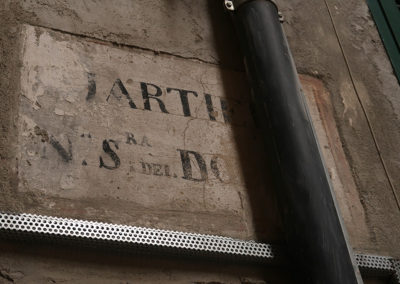
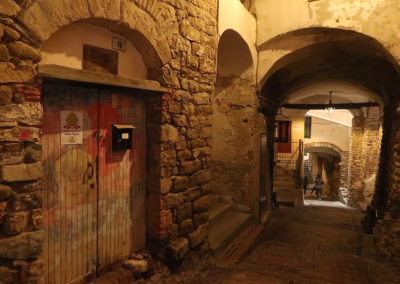
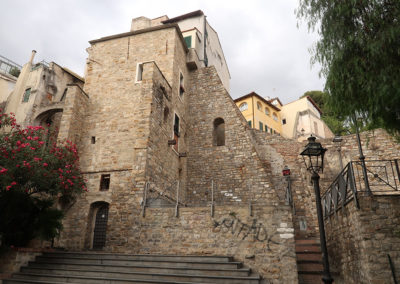
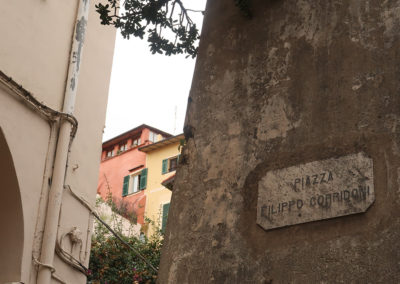
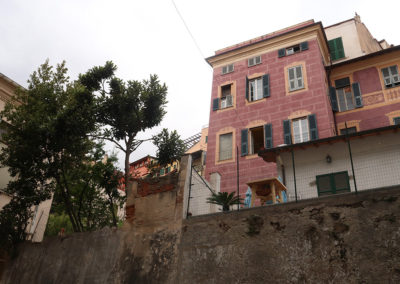
Love this ; everything about this place warms my heart, thanks, jt